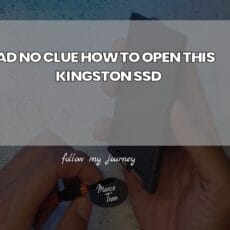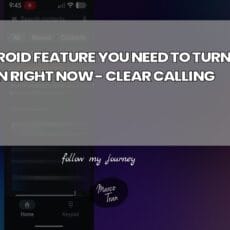Back when lockdown had me counting ceiling cracks, I bought not one, but two smartwatches. Why? Call it boredom mixed with a keen interest in whether gadgets could actually outsmart my decades-long relationship with insomnia. Here’s what happened when I made bedtime a high-tech experiment — and why the numbers left me scratching my head.
A Tale of Two Gadgets: My Sleep Tracking Kickoff
It all started with a winter sale and a bit too much time on my hands. I picked up both the Samsung Watch 5 and the Huawei GT3, mostly out of curiosity—and, I’ll admit, boredom. The price drops didn’t hurt either. I’d always been interested in Smartwatch Sleep Monitoring, but I’d never actually compared two devices side by side in my own bedroom. This wasn’t a lab experiment; it was just me, my two new gadgets, and a hope for better sleep insights.
The first night was a bit of a spectacle. I strapped on both watches before bed, feeling slightly ridiculous but also a little empowered. It’s not every night you become your own sleep study. The plan was simple: use the sleeping function on both watches and compare the stats from their respective apps. The Samsung Health App would handle the Watch 5, while the Huawei Health app would log the GT3’s data.
Setting up Sleep Mode Functionality on both devices was straightforward enough. I made sure to activate sleep mode before tucking in, since research shows that both watches need this step to track sleep accurately. It’s easy to forget, but skipping it can throw off the whole night’s data. I even scribbled down my own predictions for how well I’d sleep—a rare move, since I’m usually out cold before the opening credits of any film.
Of course, the reality of Smartwatch Sleep Monitoring isn’t always as smooth as the marketing suggests. The first few nights were a bit of a dance: syncing the Samsung Health App, updating the Huawei GT3 firmware, and making sure both devices were actually logging data. Sometimes the numbers didn’t match up, and the initial thrill of new tech faded fast when the stats felt more like a puzzle than a health insight. Still, it was fascinating to see both sets of sleep stats side by side, especially knowing that each device was designed to offer detailed sleep tracking features.
Comparing the Samsung Watch 5 and Huawei GT3 in real home conditions, I quickly realised that the experience was less about perfect numbers and more about wrangling data into something meaningful. Both watches promised a lot, but the reality was a bit messier—and, in a way, more human than I expected.
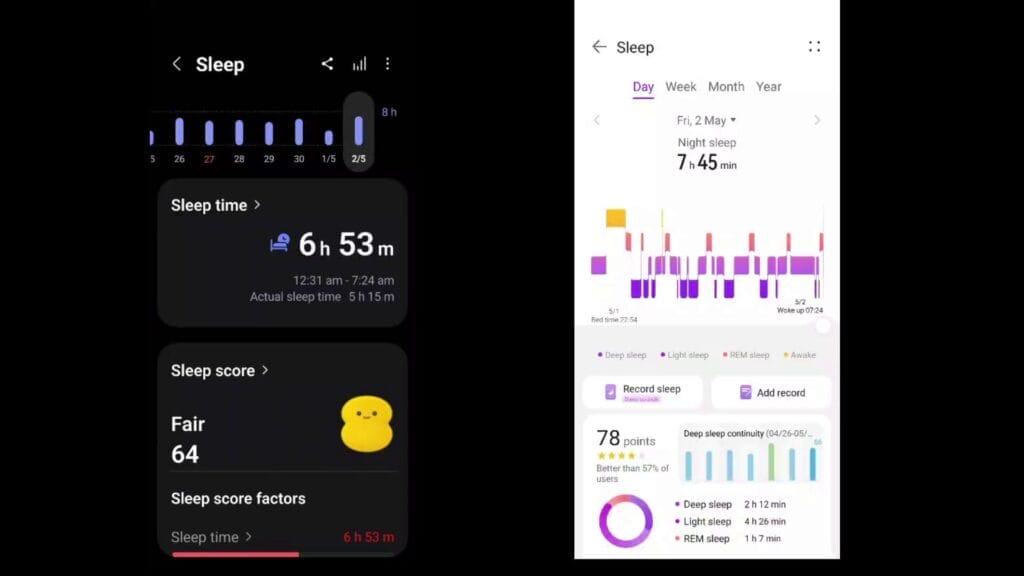
Deep Dive: Sleep Duration and the Art of Number Crunching
When it comes to Sleep Statistics Analysis, it’s easy to assume that two smartwatches tracking the same night’s rest would spit out similar numbers. That wasn’t my experience. On one wrist, the Samsung Watch 5 told me I’d slept for 6 hours and 53 minutes. On the other, the Huawei GT3 clocked a much longer 7 hours and 45 minutes. That’s a pretty significant gap for a single night, and it got me wondering: how can two devices, both loaded with sensors and algorithms, disagree so much on something as basic as sleep duration?
Digging into the Sleep Duration Analysis, I noticed the watches didn’t just disagree on how long I’d slept—they couldn’t even agree on when I’d actually gone to bed. I started sleep mode on the Samsung at 10:30PM, but it didn’t count me as asleep until 12:31AM. That’s impressively close to when I remember actually dozing off. The Huawei GT3, meanwhile, seemed less precise. Its method for Sleep Onset Detection remains a bit of a mystery. It simply gave me a longer sleep window, but I couldn’t quite match its timestamps to my real schedule.
It’s a strange feeling, looking at your sleep stats and knowing neither device is totally spot on. I tried lining up my actual routine with the data, but there was always a mismatch. The Samsung Health App, for all its detailed breakdowns, still made some assumptions. The Huawei Sleep Tracking, on the other hand, felt a bit more opaque—lots of numbers, but not much clarity on how they were calculated.
Interestingly, even though the Huawei GT3 said I’d slept nearly an hour longer, I didn’t wake up feeling any more refreshed. It’s a reminder that numbers don’t always tell the whole story. Sometimes, your body’s sense of rest just doesn’t line up with what the tech reports. It’s a very modern problem: technology says you’ve had a good sleep, but your own experience begs to differ.
Research shows that sleep duration and onset detection can differ significantly between devices. The Samsung Watch 5 uses a specific timestamp for sleep onset, while the Huawei’s approach is less transparent. This contrast in Sleep Statistics Analysis highlights the challenges of relying solely on wearable data for understanding sleep quality. In the end, trust in the tech is important—but so is listening to your own routine.
REM Realities: When Numbers Go Rogue
If you’ve ever wondered how much you can trust your smartwatch’s REM Sleep Tracking, you’re not alone. I recently put the Samsung Galaxy Watch 5 and the Huawei Watch GT 3 head-to-head for a night, curious to see how their Sleep Stage Analysis would stack up. The results? Let’s just say, the numbers went a bit rogue.
Looking at the data, Samsung Health App reported just 9 minutes of REM sleep, while the Huawei Sleep Tracking feature clocked me at 1 hour and 7 minutes. That’s not a small difference—it’s a completely different story about what my brain was doing while I slept. REM (Rapid Eye Movement) sleep is meant to be the stage where your mind processes emotions, cements memories, and, if you’re lucky, lets you have a few wild dreams. So, which device should I believe?
I tried to make sense of it by thinking back to how I felt the next day. Did I wake up groggy, or did I remember any vivid dreams? Honestly, nothing stood out. No wild dreams, no particular sense of mental clarity or fog. It left me scratching my head. Was I really in REM for just 9 minutes, or did I somehow manage over an hour?
Curiosity got the better of me, so I jumped online and checked what the experts say. Research shows that the average adult gets 90 to 120 minutes of REM sleep per night. That means neither the Samsung nor the Huawei matched what’s considered normal. Both watches missed the mark, just in opposite directions. This isn’t just a rounding error—it’s a reminder that REM Sleep Tracking can be dramatically different across platforms.
The more I read, the murkier things became. Studies indicate that while both the Samsung Health App and Huawei Sleep Tracking offer detailed sleep stage analysis, there’s no clear consensus on which is more accurate. The Samsung Galaxy Watch 5 does have advanced features like snore detection and blood oxygen monitoring, but when it comes to REM, the numbers just didn’t add up for me. Meanwhile, the Huawei Watch GT 3, with its longer battery life and cross-platform compatibility, still couldn’t deliver REM data that matched industry averages.
All this left me feeling a bit baffled, and honestly, a bit sceptical about trusting any one device’s sleep stats. If two leading wearables can’t agree on something as crucial as REM, it makes you wonder how much faith to put in any of these numbers.
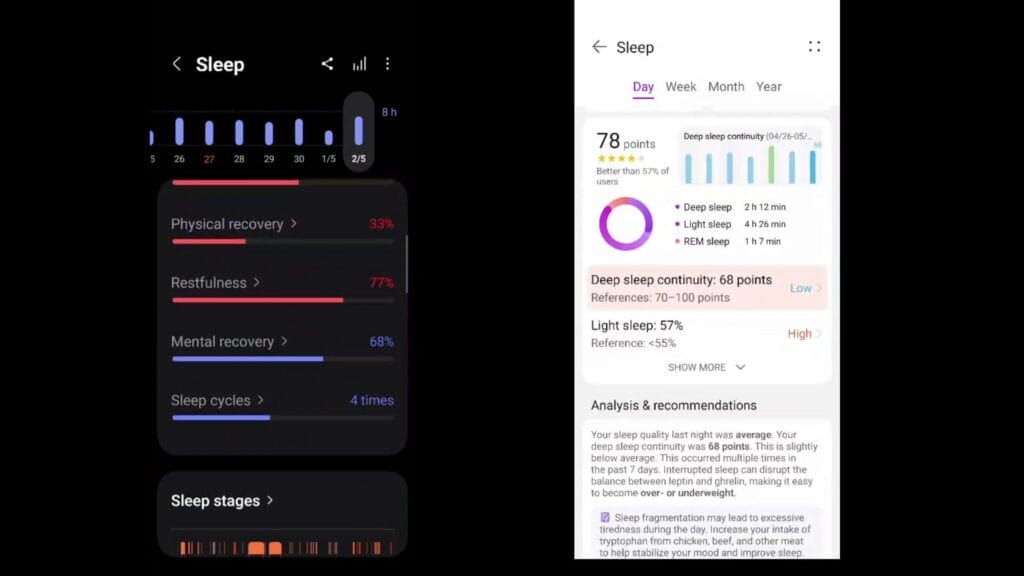
Tech vs. Reality: Can Smartwatches Really Judge Your Sleep?
When it comes to Smartwatch Sleep Monitoring, there’s a lot that happens behind the scenes—most of it, frankly, is a bit of a mystery. I’ve spent a fair bit of time comparing the Samsung Galaxy Watch 5 and the Huawei Watch GT 3, and if I’m honest, the experience left me with more questions than answers. Not all algorithms are created equal, and both watches seem to have their own secret sauce for tracking sleep. But how much can we actually trust the numbers they spit out?
Take, for example, a night when I started the Samsung’s Sleep Mode Functionality at 10:30pm. The watch recorded my actual sleep onset at 12:31am, which, to its credit, was pretty close to reality. The Huawei, on the other hand, left me scratching my head; I couldn’t quite figure out how it decided when I fell asleep. This lack of algorithm transparency is a recurring theme. Research shows that both Samsung and Huawei keep their sleep tracking methods under wraps, making it tough to know what’s really being measured.
Then there’s the matter of Sleep Statistics Analysis. One night, Samsung Health reported just 9 minutes of REM sleep, while Huawei’s numbers looked completely different. Which one was right? It’s hard to say. What I do know is that some mornings I woke up feeling groggy, even after getting a ‘good’ sleep score. Other times, the data looked average but I felt surprisingly refreshed. Device data often doesn’t align with how rested you actually feel.
Curious, I tried swapping wrists every other night—one night Samsung on the left, next night on the right. Did it help? Not really. It was more effort than it was worth, and I didn’t notice any improvement in accuracy. For light sleepers, or those who toss and turn (or share a bed with a restless pet), environmental factors can throw off the readings. Movement, noise, even a cat stealing your pillow, can impact the results.
I also experimented with both watches at once, then just one, then none at all. The results? Consistently inconsistent. Neither device offered a report that truly matched my nightly experience. At the end of the day, Smartwatch Sleep Monitoring is affected by more than just your wrist—it’s a blend of tech, environment, and the unpredictable reality of human sleep.
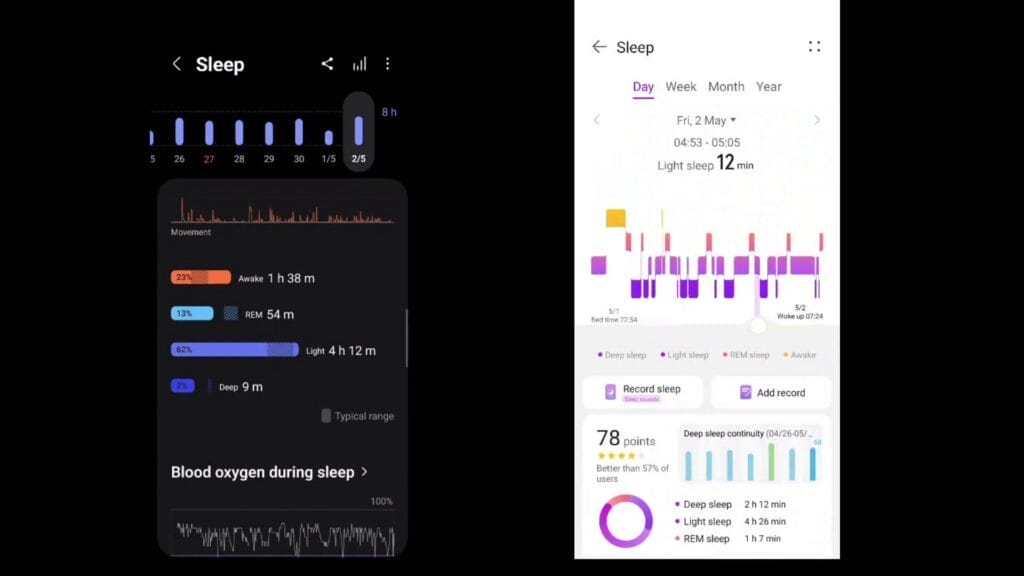
Gadget Guilt and Bedside Rivalry: The Human Side of Sleep Tracking
When I first started using both the Samsung Galaxy Watch 5 and Huawei Watch GT 3 for Smartwatch Sleep Monitoring, I didn’t expect my nights to become a numbers game. Both watches record sleep stats with impressive detail, and I found myself obsessing over the data each morning. If you’ve ever used both devices, you’ll know what I mean—comparing the stats becomes almost irresistible. I’d wake up, check the lowest sleep score, and let that number set the tone for my day. Not exactly the healthiest way to start.
The competitive side of Sleep Consistency Tracking crept in quickly. I started sharing screenshots from the Samsung Health app and Huawei Health app in my group chats. What began as casual updates soon turned into a nightly rivalry. Friends would weigh in, sometimes with genuine advice, other times with a bit of envy. It was all in good fun, but it definitely made sleep feel less private and more like a leaderboard. The social side of sleep tracking isn’t talked about much, but it’s real—sleep stats became a talking point, sometimes even a source of friendly one-upmanship.
Keeping both watches charged and ready for bed became its own job. The Samsung Galaxy Watch 5, with its shorter battery life, needed more frequent charging than the Huawei Watch GT 3. I’d find myself planning my evenings around when I could top up the batteries, just to make sure I didn’t miss a night of data. It’s a small thing, but it added a layer of tech-related stress to my bedtime routine. Sometimes, the glare from the screens or the fit of the bands would make it hard to get comfortable, which felt counterproductive for something meant to improve sleep.
Eventually, I decided to ditch both watches for a week—no Smartwatch Features 2025, no sleep scores, just old-fashioned rest. Research shows that stepping away from constant tracking can help reduce anxiety and improve subjective sleep quality. My own experience backed this up: without the pressure of nightly scores, I felt less stressed before bed and actually slept better, at least in my own estimation. It was a reminder that while Smartwatch Sleep Monitoring offers valuable insights, it can also shape your mindset in unexpected ways. Sometimes, the best feature is knowing when to take a break.
The Real “Accuracy” Test: Trusting Devices, or Trusting Yourself?
When it comes to Smartwatch Sleep Monitoring, it’s easy to get caught up in the numbers. I found myself doing exactly that—comparing the stats from my Samsung Galaxy Watch 5 and Huawei Watch GT 3, poring over sleep stages, duration, and those elusive sleep scores. But after a few weeks of Sleep Statistics Analysis, I started to wonder: what do these stats actually mean for how rested I feel?
At one point, I was knee-deep in statistics, trying to work out which device was “right.” But when I reached out to friends who’d used both watches, the answers were anything but clear. Some swore by the Samsung Health app’s detailed breakdowns—snore detection, blood oxygen, even sleep coaching. Others preferred the Huawei GT 3, praising its longer battery life and simple interface. But here’s the kicker: most people said their own feelings in the morning mattered more than any number on a screen.
This got me thinking about Sleep Consistency Tracking and how we interpret the data. Research shows that human experience and device data often diverge. I ran a quick poll among friends, and the results were split right down the middle. Some trusted the numbers, others trusted their gut. No clear winner, just a lot of opinions and a few laughs about how “accurate” our sleep really felt.
What surprised me most was how this whole process changed my relationship with sleep. Instead of obsessing over every stat, I started to reflect on how I actually felt each morning. Was I refreshed? Groggy? Did the numbers match up with my own sense of rest? More often than not, they didn’t. That’s when it hit me: data can inform, but not define, wellbeing.
If you’re using Smartwatch Sleep Monitoring, here’s a little experiment. Next time you wake up, rate your sleep on a scale of one to ten before you check your device. Then compare your gut feeling to the numbers. You might be surprised by the results. For me, the best tracker was still my own body, no matter how clever the tech.
So, after asking around and doing my own Sleep Statistics Analysis, my verdict is simple: listen to your body as much as your gadget. The numbers are useful, but they’re only part of the story. Sometimes, the most accurate measure of a good night’s sleep is simply how you feel when you open your eyes.
Wild Card: What If Sleep Tracking Became a Sport? (A Whimsical Aside)
Every now and then, I find myself staring at the sleep stats on my wrist and wondering if we’ve all taken this a bit too far. With Smartwatch Features 2025 promising even more advanced Snore Detection and sleep analysis, it’s easy to imagine a future where sleep tracking isn’t just a personal health tool, but a full-blown competitive sport. It sounds ridiculous, but let’s run with it for a moment.
Picture this: official national ‘sleep leagues’ where your nightly data, courtesy of the latest Samsung Galaxy Watch 5 or Huawei Watch GT 3, is broadcast for all to see. Sleep coaches could break down your REM averages, awarding medals for best deep sleep streak or most improved sleep onset. Maybe there’d be a Sleep Olympics, with sponsors lining up to back the most consistent snoozers, all powered by data and, let’s be honest, some pretty dubious algorithms.
It’s a playful thought, but it does highlight something real. As I compared the Samsung Watch 5 and Huawei GT3, I noticed how different their numbers can be. It’s hard to say which one’s more accurate, but both are able to record the statistics. If you’ve used both, I’d love to know which one you think is more reliable. This sort of Smartwatch Comparison is a reminder that, while the data is fascinating, it’s not gospel.
Research shows that society’s fixation with numbers is ripe for parody, especially when it comes to personal health tech. We love to measure, compare, and rank – even our sleep. But sometimes, a bit of humour and perspective is needed. After all, no algorithm can capture the full story of a restless night or a particularly peaceful sleep-in. The Samsung Health app’s detailed sleep scores and snore detection are impressive, and the Huawei Watch GT 3’s long battery life is a real plus. Still, both are just tools, not judges.
So, while the idea of a Sleep Olympics is fun to imagine, maybe it’s also a gentle nudge to take our sleep data with a grain of salt. Wearables can help us spot trends and encourage better habits, but they’re not the final word on our wellbeing. In the end, the best feature might just be learning to laugh at ourselves and our obsession with tracking every last minute of shut-eye.

If this article helped you in any way and you want to show your appreciation, I am more than happy to receive donations through PayPal. This will help me maintain and improve this website so I can help more people out there. Thank you for your help.
HELP OTHERS AND SHARE THIS ARTICLE
LEAVE A COMMENT
I am an entrepreneur based in Sydney Australia. I was born in Vietnam, grew up in Italy and currently residing in Australia. I started my first business venture Advertise Me from a random idea and have never looked back since. My passion is in the digital space, affiliate marketing, fitness and I launched several digital products. You will find these on the portfolio page.
I’ve decided to change from a Vegetarian to a Vegan diet and started a website called Veggie Meals.
I started this blog so I could leave a digital footprint of my random thoughts, ideas and life in general.
If any of the articles helped you in any way, please donate. Thank you for your help.
Affiliate Compensated: there are some articles with links to products or services that I may receive a commission.

